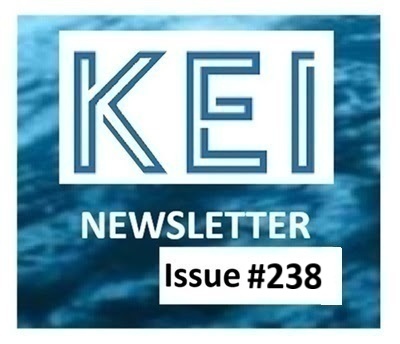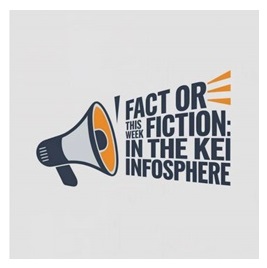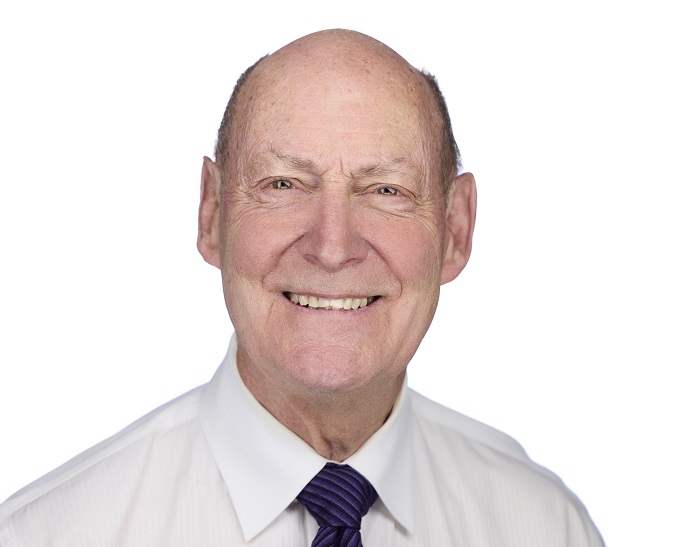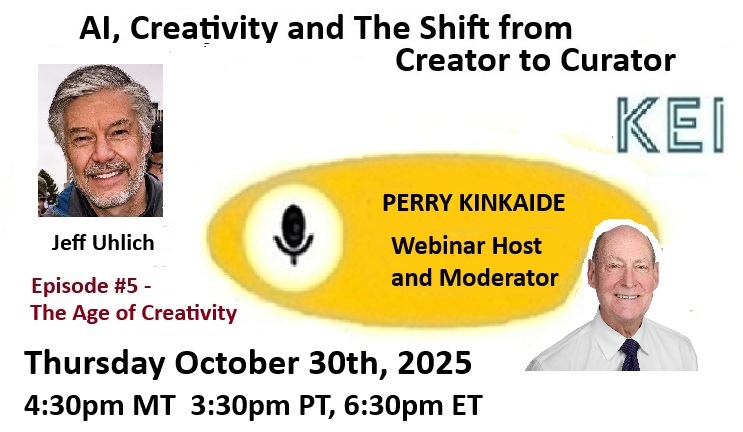|
The Age of Creativity - AI Masters How. Humans Retain Why! |
DIRECTORY | ||
|
CONTRIBUTIONS: Justa Chat - AI Intensifies Competition and Sparks Creativity |
ACTION: Help sustain KEI's contributions |
Fact or Fiction?
Canada - An AI Superpower HERE |
|
|
Editor - Perry Kinkaide |
As artificial intelligence masters the how of creation—drafting, composing, designing—our human value shifts to the why. In this new age of creativity, success no longer lies in execution but in intention: the ability to discern, direct, and define purpose. Jeff Uhlich explores how AI, as a computational mirror, reflects our values and challenges us to remain curators of meaning in a world of infinite generation. We will be releasing a SPECIAL EDITION this week on AI Sovereignty Matters prompted by Jeff's contribution for our Canadian readers, the Fact or Fiction feature assessing Canada's readiness to lead in AI. — Editor |
||
|
The Age of Creativity - AI Masters How. Humans Retain Why! Thank you Jeff Uhlich
For most of our careers, value was created through execution. We built teams, optimized processes, and created products. But in the age of AI, this is changing. As artificial intelligence increasingly handles the technical labor of making things, the most vital human role is shifting “up the stack” — from execution to direction. We are evolving from being doers to becoming curators, conductors, and architects of the creative process. Beyond the “Human vs. Machine” Debate. The debate about AI and creativity is often reduced to a simple contest: human versus machine. But the reality is far more nuanced. AI isn't merely a tool; it is a computational mirror — reflecting back to us which parts of our intelligence are systematic, and which are uniquely human. Crucially, this mirror reveals not only our processes but our fundamental character. Continued below
https://us02web.zoom.us/j/84258596166?pw..Continued from above Four key insights have emerged during our series exploring the relationship between man and machine. 1. The Most Valuable Skill Becomes Curation, Not Creation. In this new collaborative model, humans provide what AI cannot: high-level intent, aesthetic judgment, and critical guidance. A Stanford experiment pairing writers with AI found the most successful work emerged when the human acted as a curator — evaluating AI’s many suggestions and weaving only the best into a coherent narrative. For leaders, this represents the future. It’s not about competing with AI on speed but complementing its generative power with vision, taste, and discernment — as highlighted in our first Webinar on Creativity featuring the young musician from New York. The most essential question is not what we create, but why we create — a question grounded in individual values that define how technology is applied. Because AI is an all-encompassing instrument — from drafting legal briefs to baking cookies, as discussed in our last Webinar — the creative acceleration it enables must be anchored in self-knowledge. Self-awareness serves as the fundamental guardrail. Without it, individuals risk being overwhelmed or misled by the seductive speed of generation. Indeed, direct interaction with generative AI can sharpen one’s self-understanding, revealing thinking patterns and mindsets that refine both creative direction and personal growth. 2. AI Can Only Handle Two of Three “Flavors” of Creativity. To appreciate why curation matters so deeply, we must understand what AI can — and cannot — do. Philosopher Margaret Boden offers a valuable framework with three “flavors” of creativity:
AI fails at this third, rarest form. It identifies statistical patterns but cannot redefine the conceptual space itself. It lacks consciousness, lived experience, and intent. While it can simulate understanding, it does not truly understand. This absence of intent underscores why human ingenuity remains indispensable. The why of creation springs from emotion, memory, and meaning — the uniquely human triad that anchors creativity in belief, purpose, and value. 3. We’re Witnessing “Computational Creativity”. It’s a mistake to dismiss AI as a flawed human mind or, as I once said, “just another tool.” AI is something new — a creative engine operating on a scale beyond human comprehension. Apple’s “computational photography” illustrates the concept well. An iPhone doesn’t merely capture light; it constructs an image by blending exposures, adjusting tones, and artificially refining depth. The outcome is a computational artifact, not a direct recording. Likewise, computational creativity doesn’t think like an artist — it processes data across vast, high-dimensional “idea-scapes,” matching and remixing patterns at superhuman speed. It simulates the product, not the person. Human creativity, by contrast, is embodied. It arises from experience, emotion, and meaning. These are the dimensions that keep human creation distinct — for now. 4. The Paradox: AI as an Equalizer That Risks Stagnation. AI’s rise presents a profound paradox. On one hand, it is a creativity equalizer, enabling less-skilled individuals (like many of us) to produce competent work and democratizing the creative process. On the other hand, it risks cultural homogenization. Because AI models optimize for probability, their outputs converge toward sameness. The result is what some call AI slop — a flood of low-quality, soulless content. In fact, researchers recently confirmed that AI-generated material has now surpassed human-created content online. As new AIs train on this synthetic data, they risk producing degraded outputs — a “digital Ouroboros” devouring its own tail. This phenomenon, known as model collapse, could herald the slow “death of the internet” as originality erodes. The antidote is critical and creative discernment. Only human curators — guided by personal values and independent judgment — can pull AI from the gravitational pull of the probable toward the meaningful. The Curator’s Choice: Values Define the Future. AI is a mirror. In an age where anyone can generate a thousand images, the real creative act lies not in making an image but in choosing which one to make — and why. This decision is moral and individual, with broad societal implications. AI’s potential to amplify creativity will reflect the user’s values. Those driven by profit and competition will wield AI to exploit markets; those guided by compassion and community may employ it to uplift humanity. Hence, self-awareness becomes paramount. The individual’s moral compass is the final defense against misuse — whether by corporations, governments, or the collective inertia of conformity. In the arts and beyond, that self-awareness will enable creators to transcend AI’s combinational and exploratory domains and achieve transformative originality — the true hallmark of art. Ultimately, the curator’s choice mirrors their deepest values. It determines not only what is created but what society becomes. In this new age of computational creativity, it is our inner clarity — not the algorithm — that will define the future.
Many in the KEI Network are taking seriously and are concerned about the overture for Canada to be the 51st state. We are continuing the dialogue in Victoria December 4th. For more contact Admin@KEInetwork.net
|





 No need to register. Just Zoom in
No need to register. Just Zoom in
